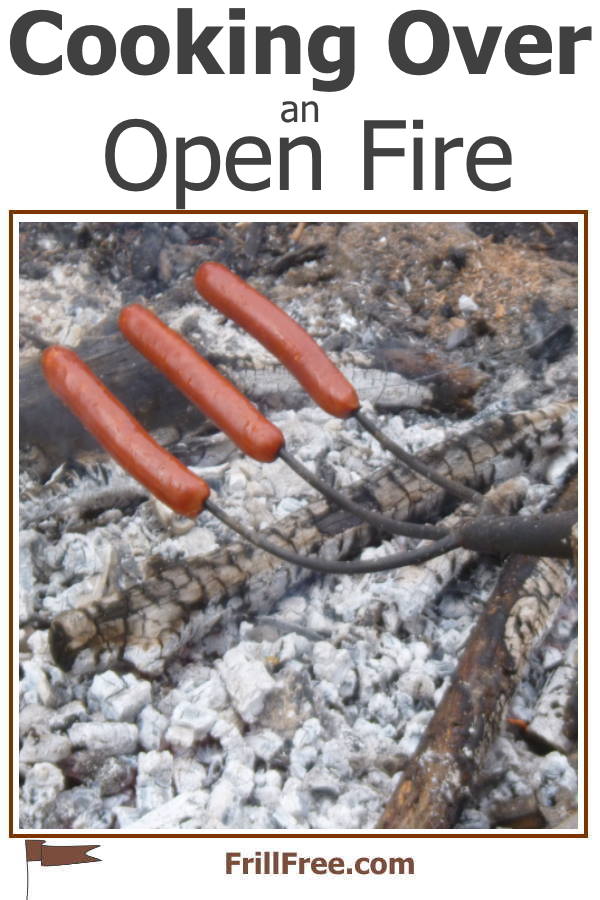- Homesteading
- Fire
- Cooking Over an Open Fire
Cooking Over an Open Fire
Shore Lunch Version
Over the years, we've enjoyed cooking our meals over the fire. First we start the bonfire with scrap wood and other firewood (usually culled from the woodshed as not good enough to burn in the woodstove) and then the magic happens.
Most wood is not well suited for cooking directly over. Wood like larch, pine or spruce tends to have turpentine or resin in it, so it will flavor the meal with a turpentine flavor.
Please be careful with fires, even those you plan to cook over.
The same cautions apply;
- make sure you set the fire on mineral soil (gravel, sand or clay) and
- it's away from flammable materials.
- Have a container of water or a charged hose handy.
The best wood to cook with is willow, or alder. Alder is the only wood that will burn green (makes a lot of smoke, but it burns!). Sometimes, if there's no other wood available, poplar will work in a pinch.
Hardwood like apple or other fruit wood (not peach, plum or other stone fruit, which could introduce off flavors to the food) are excellent, although need a lot of other less dense wood to get them hot enough to really burn.
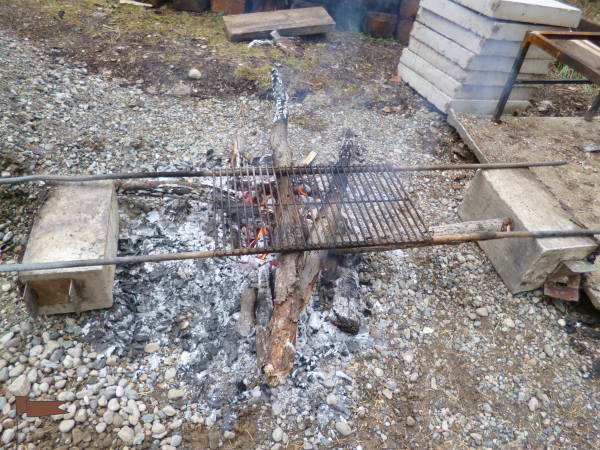 The grill set up over the hot coals ready to go...
The grill set up over the hot coals ready to go...The flames are not what you want; the coals are. The heat should be quite intense, even with no live flame.
What Can You Cook Over an Open Fire?
Certain items are fabulous (and easy) to cook over an open fire. These are meals that are self contained, like hot dogs.
We use a three pronged pitchfork with a hot dog speared on each tine, held over the fire and turned to get each one exactly the right shade of deliciousness.
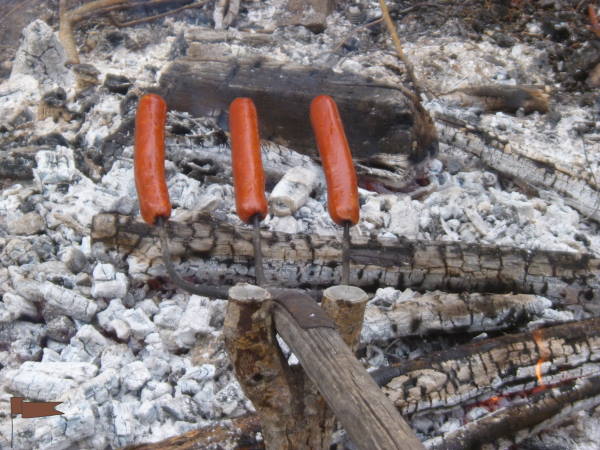 Hot Dogs on a Pitchfork
Hot Dogs on a PitchforkSome things, like burgers or other meats, need to be placed on a grill - we've got an old barbecue grill held onto some ground rods that fits over the fire pit.
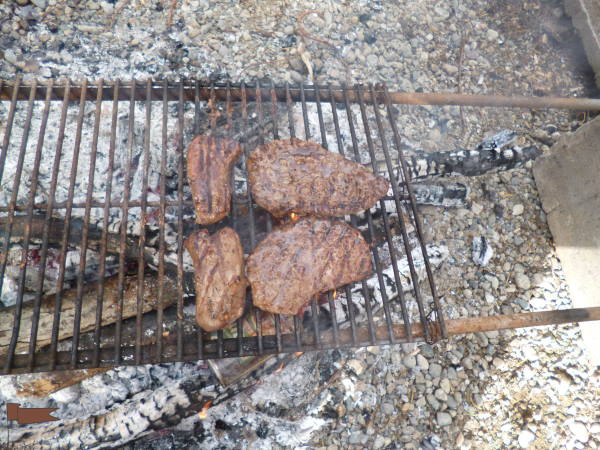 Dexter steaks cooking on a grill over the hot coals...
Dexter steaks cooking on a grill over the hot coals...You can also use grill baskets which hold your meal in a closed basket that can be turned without touching the food, so it doesn't fall apart.
Fish, fresh caught, preferably, works well in a fish shaped basket. Other shapes are square or rectangular. This is the epitome of a shore lunch!
Farmer sausage or other types of charcuterie work well cooked over the fire. Slice into uniform thicknesses for the best results.
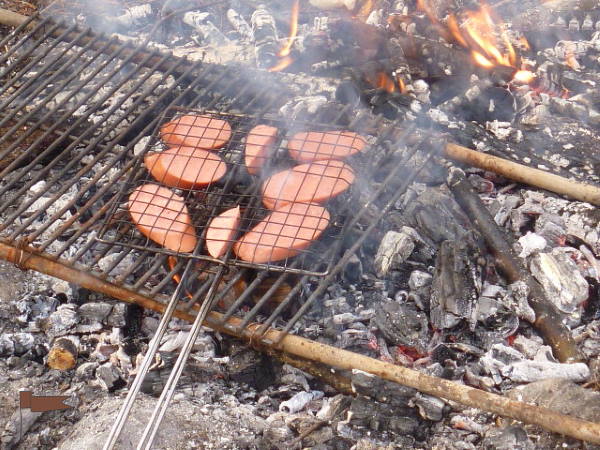 Square Basket for cooking farmers sausage slices to perfection
Square Basket for cooking farmers sausage slices to perfectionAnother method is to use heavy duty aluminum foil, with your choice of vegetables in a single layer, which can be flipped over halfway through.
The only problem with this technique is that you can't see what's going on inside the packet, it's always going to be by guess and by golly if you get it right.
This is where your sense of smell will come in handy.
The smell of caramelizing onions is a cue for how well cooked the innards of the tin foil are getting.
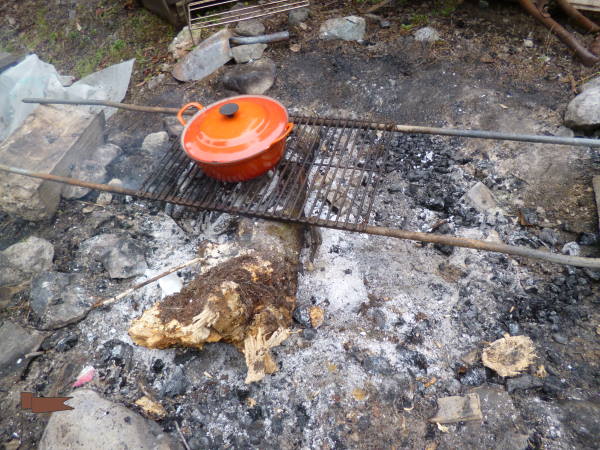 Cooking over an open fire with a Dutch oven
Cooking over an open fire with a Dutch ovenThat old standby, the cast iron Dutch oven, is excellent over the fire.
Either on a rack, or buried into the coals, your meal will be ready without you having to do much of anything except put a selection of root vegetables, celery, onions, garlic and some kind of meat (bratwurst sausage, maybe?).
Set the lid on, and sink it into the coals for an hour or two. Some cooks use mud to seal up the lid and keep ashes from entering the dutch oven.
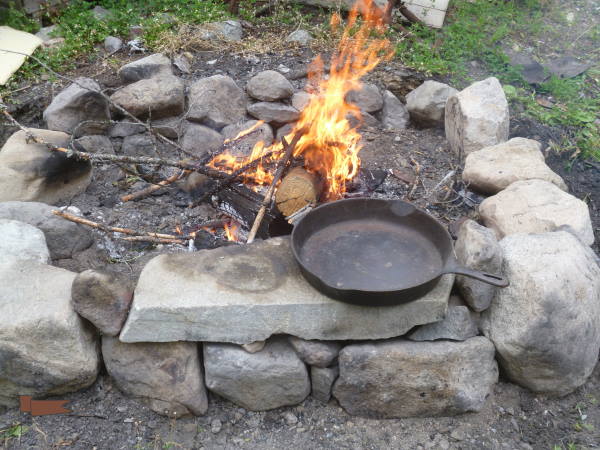 Getting the fire ready for the frying pan
Getting the fire ready for the frying panAnd don't forget the simple and basic frying pan. You'll need the grill to support it, but bacon cooked this way gets smoked as well as cooked. How perfect is that?
